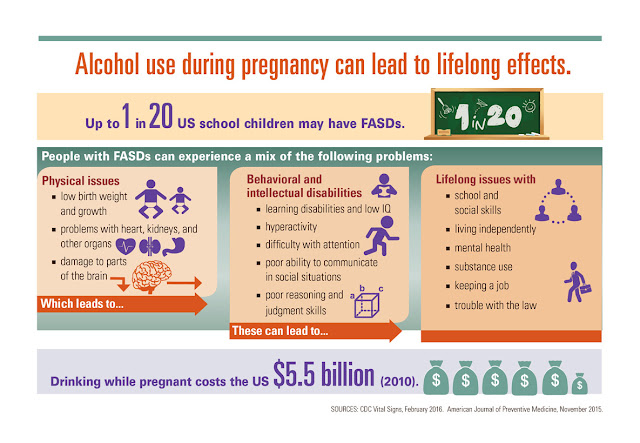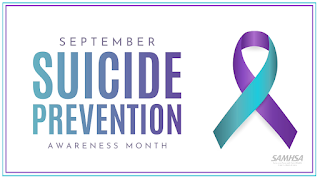September is Fetal Alcohol Spectrum Disorders (FASD) Awareness Month
Fetal alcohol spectrum disorders (FASDs) is an umbrella term used to describe the range of effects that can occur in an individual with prenatal alcohol exposure. These effects can have lifelong implications including physical, mental, behavior, and/or learning issues.
- Fetal Alcohol Syndrome (FAS)
FAS is on the most severe end of the FASD spectrum. It describes people with the greatest alcohol effects, causing signs and symptoms so distinct that the diagnosis is based on special measurements and findings in each of the 3 following areas:
Three specific facial abnormalities: smooth philtrum (the area between nose and upper lip), thin upper lip, small palpebral fissures (the horizontal eye openings)
Growth deficit (lower than average height, weight or both)
Central nervous system (CNS) abnormalities (structural, neurologic, functional, or a combination of these)
- Partial Fetal Alcohol Syndrome (pFAS)
- When a person does not meet the full diagnostic criteria for FAS but has a history of prenatal alcohol exposure and some of the facial abnormalities, as well as a growth problem or CNS abnormalities that person is considered to have partial FAS (pFAS)
- Alcohol-Related Neurodevelopmental Disorder (ARND)
People with ARND do not have abnormal facial features or growth problems, but do have problems with how their brain and nervous system were formed as well as how they function. These individuals may have:
Behavior or learning problems
Nerve or brain abnormalities
In particular, a 2011 federally convened committee that reviewed the science noted that these children are most likely to have problems with neurocognitive development, adaptive functioning, and or behavior regulation.
- Neurobehavioral Disorder Associated with Pre-Natal Alcohol Exposure (ND-PAE)
In addition to confirmed prenatal alcohol exposure, these individuals have impairment of neurocognition, self-regulation, and adaptive functioning. ND-PAE combines deficits is these three areas in conjunction with the following:
Evidence of prenatal alcohol exposure
Childhood onset of symptoms
Significant distress or impairment in social, academic, occupational, or other important area of function
- Alcohol-Related Birth Defects (ARBD)
People with ARBD have problems with how some of their organs were formed and or how they function, including:
Heart
Kidney
Bones (possibly the spine)
Hearing
Vision
These individuals also may have one of the other FASDs.
No one treatment is right for every child, as FASD and its constellation of symptoms differ from one child to another. FASDs need a medical home to provide, coordinate, and facilitate all the necessary medical, behavioral, social, and educational services.
- Many types of available treatments include but are not limited to:
- Developmental services
- Educational interventions
- Behavior modification
- Parent training
- Social skills training
- Medications and other medical therapies
- Transition planning
- Advocacy in school and the workplace
- Referral for community support services
- Coordination across the specialists, partners, and needed supports
- Primary care in a high quality medical home setting with care integration
Treatment plans should be adaptable to the child's and family's needs, plus include close monitoring and follow-up.
FASDs last a lifetime. There is no cure for FASDs, but identifying children with FASDs as early as possible can help them reach their potential. Research has shown that early identification and enrollment in treatment can significantly improve an affected child's development and life.




Comments
Post a Comment